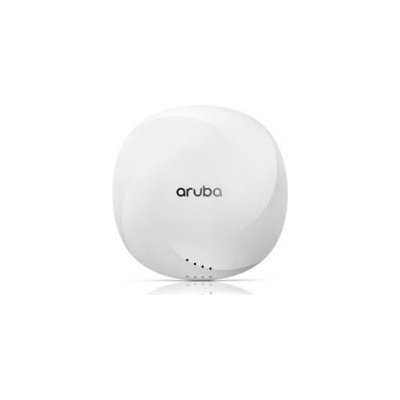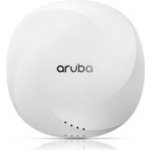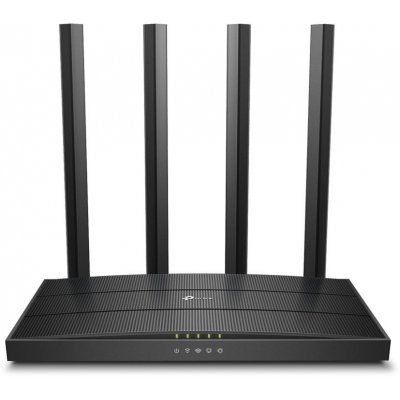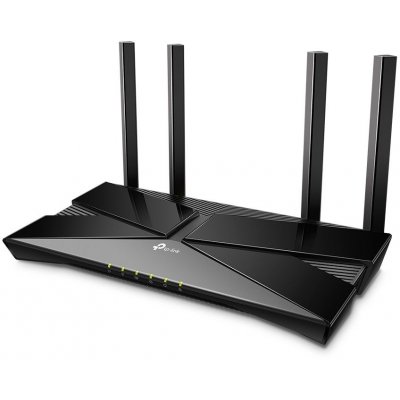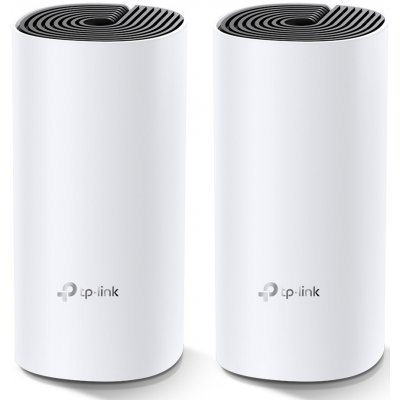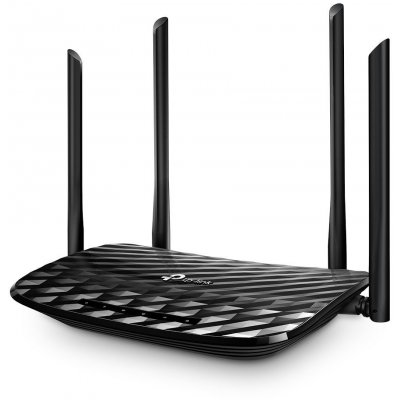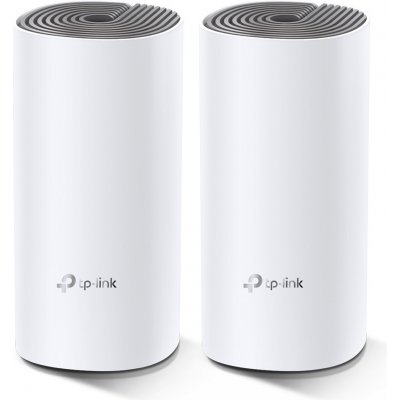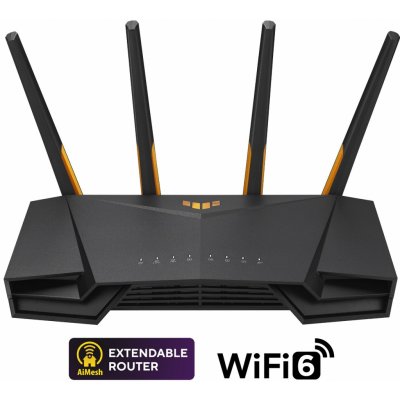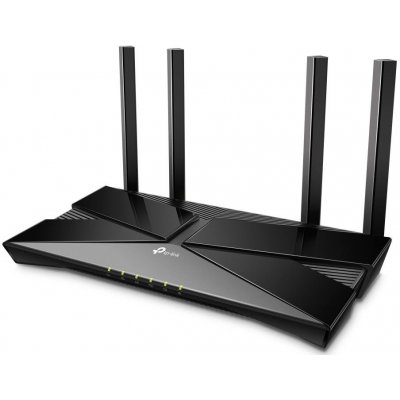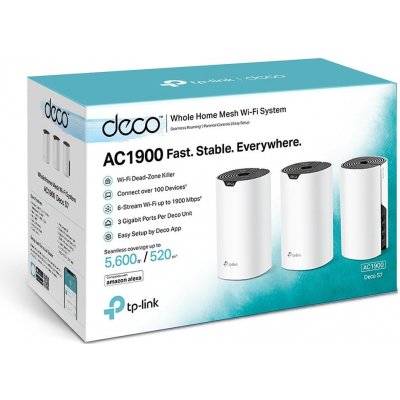Aruba AP-615 (RW) Dual-radio Tri-band 2x2:2 802.11ax Wi-Fi 6E Internal Antennas Campus AP RENEW Aruba 610 Series Campus Access Points Fast, Resilient, and Secure Wi-Fi 6E Connectivity in a Compact and Affordable Platform For enterprises who need more wireless capacity and/or wider channels, Aruba 610 Series Campus APs are designed to take advantage of the newly available 6 GHz spectrum using a unique dual-radio/tri-band architecture. Adding support for the 6 GHz band to the traditional 2.4 GHz... Celý popis
Koupit za 9 798 Kč- Od nejoblíbenějších
- Od nejlevnějších
- Od nejdražších
 100 %
100 %
Aruba AP-615 (RW) Dual-radio Tri-band 2x2:2 802.11ax Wi-Fi 6E Internal Antennas Campus AP RENEW R7J49A
Doprava:
zdarma
Skladem
9 798 Kč
Koupit za 9 798 Kč
 96 %
96 %
WiFi Access Point Aruba AP-615 (RW) Dual-radio Tri-band 2x2:2 802.11ax Wi-Fi 6E Internal Antennas Campus AP (R7J49A)
Doprava:
zdarma
Skladem
26 235 Kč
Koupit za 26 235 Kč
 81 %
81 %
HP Aruba AP-615 (RW)
Doprava:
zdarma
Skladem
26 175 Kč
Koupit za 26 175 Kč
 85 %
85 %
Aruba AP-615 (RW) Dual-radio Tri-band 2x2:2 802.11ax Wi-Fi 6E Internal Antennas Campus AP
Doprava:
79 Kč
Skladem
25 976 Kč
Koupit za 25 976 Kč
 92 %
92 %
Aruba AP-615 (RW) Campus AP, R7J49A
Doprava:
99 Kč
Skladem
25 532 Kč
Koupit za 25 532 Kč
Popis
Aruba AP-615 (RW) Dual-radio Tri-band 2x2:2 802.11ax Wi-Fi 6E Internal Antennas Campus AP RENEW
Aruba 610 Series Campus Access Points
Fast, Resilient, and Secure Wi-Fi 6E Connectivity in a Compact and Affordable Platform
For enterprises who need more wireless capacity and/or wider channels, Aruba 610 Series Campus APs are designed to take advantage of the newly available 6 GHz spectrum using a unique dual-radio/tri-band architecture. Adding support for the 6 GHz band to the traditional 2.4 GHz and 5 GHz bands more than doubles the available wireless capacity in a wireless network - so you can meet growing demand due to bandwidth-hungry video, increasing numbers of client and IoT devices, and growth in cloud.
Unique to Aruba, the 610 Series features two radios that can be tuned to any two of the three available spectrum bands for Wi-Fi (2.4 GHz, 5 GHz, 6 GHz). This flexibility provides a cost-effective and compact platform that delivers full tri-band coverage as part of a multi-AP deployment and can be used with software that will intelligently and flexibly configure the radios of each of these dual-radio APs.
Key Features
Unlocks the 6 GHz band to more than double the available capacity in wireless networks
Comprehensive dual radio/tri-band coverage across 2.4 GHz, 5 GHz, and 6 GHz to deliver up to 3.6 Gbps combined peak data rate1
Compact and low power consumption - virtually unrestricted operation from an 802.3af (class 3) PoE source2
Up to seven 160 MHz channels in 6 GHz to support low-latency, bandwidth-hungry applications like high-definition video, and augmented reality/virtual reality applications
2.5 Gbps Smart Rate Ethernet port to minimize wired bottlenecks
Built-in GPS receivers and fine time measurement (802.11mc) to enable APs to automatically locate themselves and serve as reference points for accurate indoor location measurements
Notes:
1When configured for 5 GHz + 6 GHz operation
2By default (with IPM disabled) the AP-615 will disable the USB port and limit the speed of the Ethernet port to 1Gbps when on class 3 POE. The Intelligent Power Monitoring feature can be used to avoid these restrictions
Standard Features
More Capacity and Wider Channels
The Aruba 610 Series APs are designed to take advantage of Wi-Fi 6E and the 6 GHz band, which translates into far greater speeds, wider channels for multi-gigabit traffic, and less interference. Its two 2x2 MIMO radios deliver a combined peak data rate of up to 3.6 Gbps when configured for concurrent 5 GHz and 6 GHz operation.
Advantages of 6 GHz
Wi-Fi 6E provides up to 1200 MHz of additional unlicensed spectrum in the 6 GHz band for higher throughput and improved application performance. With up to seven 160 MHz channels, Wi-Fi 6E can better support low-latency, bandwidth hungry applications like high-definition video and augmented reality/virtual reality applications. Only Wi-Fi 6E capable devices can use the 6 GHz band so there is no interference or slowdowns due to legacy devices.
Device Class Support
The Aruba 610 Series APs are part of the low power indoor (LPI) device class. This fixed indoor-only class uses lower power levels and does not require an Automated Frequency Coordination service (AFC) to manage incumbent outdoor services, which is required for standard class APs.
Global Readiness
While the need for more Wi-Fi capacity is recognized across the globe, countries are approaching the 6 GHz band differently. The 610 Series APs are set up to automatically update regulatory rules once Wi-Fi 6E regulations have been approved and certified.
Extend the Benefits of Wi-Fi 6
The Aruba 610 Series APs are based on the 802.11ax (Wi-Fi 6) standard, which means that all its efficiency and security enhancements are also available on the 6 GHz band. Wi-Fi 6 features such as Orthogonal Frequency Division Multiple Access (OFDMA), BSS coloring etc. are fully supported on the Aruba Wi-Fi 6E access points as well.
Advantages of OFDMA
The Aruba 610 Series is equipped with OFDMA to handle multiple 802.11ax capable clients on each channel simultaneously, regardless of device or traffic type. Channel utilization is optimized by handling each transaction via smaller sub-carriers or resource units (RUs), which means that clients are sharing a channel and not competing for airtime and bandwidth.
Wi-Fi Optimization
Client Optimization
Aruba's patented AI-powered technology eliminates sticky client issues by steering a client to the AP where it receives the best radio signal. ClientMatch steers traffic from the noisy 2.4 GHz band to the preferred 5 GHz or 6 GHz band depending on client capabilities and AP setttings. ClientMatch also dynamically steers traffic to load balance APs to improve the user experience.
Automated Wi-Fi Radio Frequency Management
To optimize the user experience and provide greater stability, Aruba AirMatch allows organizations to automate network optimization using machine learning. AirMatch provides dynamic bandwidth adjustments to support changing device density, enhanced roaming using an even distribution of Effective Isotropic Radiated Power (EIRP) to radios, and real-time channel assignments to mitigate co-channel interference.
AirMatch also ensures that the two radios of Aruba 610 Series Access Points are automatically configured in the most effective and efficient way to deliver full tri-band coverage.
Application Assurance
With Aruba Air Slice, organizations can provide application assurance to their users that goes beyond the traditional capabilities of airtime fairness. After the SLAs are configured, Air Slice monitors network usage, automatically allocates radio resources, and dynamically adjusts radio resources as new users connect and applications sessions begin or end.
Aruba Advanced Cellular Coexistence (ACC)
Unique to Aruba, Advanced Cellular Coexistence uses built-in filtering to automatically minimize the impact of interference from cellular networks, distributed antenna systems (DAS), and commercial small cell or femtocell equipment.
Intelligent Power Monitoring (IPM)
For better insights into energy consumption, Aruba APs continuously monitor and report hardware energy usage. Unlike other vendor's access points, Aruba APs can also be configured to enable or disable capabilities based on available PoE power - ideal when wired switches have exhausted their power budget. Enterprises can deploy Wi-Fi 6E APs and update switching and power at a later if needed based on their actual usage.
Self-Locating APs
Indoor location shouldn't require guesswork or costly overlay technologies. Aruba's Wi-Fi 6 and 6E APs help organizations leverage their wireless investment to deliver indoor location - everywhere.
Aruba 610 Series Campus APs include built-in GPS receivers and intelligent software to allow them to automatically locate themselves accurately within the universal framework of latitude and longitude. As part of Aruba's indoor location services solution, they serve as reference points for client devices using fine time measurements (802.11mc) and other location technologies.
In addition, Aruba's Wi-Fi 6 and 6E APs support Open Locate, an emerging standard that allows APs to share their location over the air and through cloud-based APIs, enabling mobile devices to locate themselves and applications to support network analytics.
APs as an IoT transport platform
The Aruba 610 Series includes an integrated Bluetooth 5 and 802.15.4 radio for Zigbee support to simplify deploying and managing IoT-based location services, asset tracking services, security solutions, and IoT sensors. There is also a USB-port extension to provide IoT connectivity to a wider range of devices. These IoT capabilities allows organizations to leverage Aruba APs as an IoT transport platform, which eliminates the need for an overlay infrastructure and additional IT resources and can accelerate IoT initiatives.
In addition, Target Wake Time (TWT), part of the 802.11ax standard, establishes a schedule for when clients need to communicate with an AP. This helps improve client power savings and reduces airtime contention with other clients, which is ideal for IoT.
Aruba secure infrastructure
The Aruba 610 Series includes build-security capabilities such as:
WPA3 and Enhanced Open Support for stronger encryption and authentication is provided via the latest version of WPA for enterprise-protected networks. Enhanced Open offers seamless new protection for users connecting to open networks where each session is automatically encrypted to protect user passwords and data on guest networks.
WPA2-MPSK MPSK enables simpler passkey management for WPA2 devices - should the Wi-Fi password on one device or device type change, no additional changes are needed for other devices. This capability requires Aruba ClearPass Policy Manager.
Simple and Secure Access To improve security and ease of management, IT can centrally configure and automatically enforce role-based policies that define proper access privileges for employees, guests, contractors, and other user groups - no matter where users connect on wired and WLANs. Dynamic Segmentation eliminates the time consuming and error-prone task of managing complex and static VLANs, ACLs, and subnets by dynamically assigning policies and keeping traffic secure and separated.
Seamless Handoffs to Cellular Built on the technical foundations of Passpoint® and Wi-Fi Calling, Aruba Air Pass creates a roaming network across the Aruba enterprise customer footprint, extending cellular coverage and enhancing the visitor and subscriber experience to deliver a great experience for your guests while reducing costs and management overhead for DAS.
Flexible Operation and Management Our APs can operate as standalone access points or with a gateway for greater scalability, security, and manageability. APs can be deployed using zero touch provisioning - without on-site technical expertise - for ease of implementation in branch offices and for remote work. Aruba APs can be managed using cloud-based or on-premises solutions for any campus, branch, or remote work environment. As the management and orchestration console for Aruba ESP (Edge Services Platform), Aruba Central provides a single pane of glass for overseeing every aspect of wired and wireless LANs, WANs, and VPNs. AI-powered analytics, end-to-end orchestration and automation, and advanced security features are built natively into the solution.
Summary
Aruba 610 Series Access Points are designed to take advantage of the 6 GHz band using two radios that can deliver comprehensive tri-band coverage in a multi-AP environment and better meet the growing demands of Wi-Fi due to increased use of video, growth in client and IoT devices, and expanded use of cloud. With a 3.6 Gbps combined peak data rate for higher throughput and faster speeds for indoor use, the Aruba 610 Series delivers a cost-effective enterprise Wi-Fi 6E solution with increased capacity, wider channels, reduced power consumption.
BTO Models
615 Internal Antenna Access Points
Rule #
Description
SKU
Aruba AP-615 (EG) Dual-radio Tri-band 2x2:2 802.11ax Wi-Fi 6E Internal Antennas Campus AP
R7J46A
Aruba AP-615 (IL) Dual-radio Tri-band 2x2:2 802.11ax Wi-Fi 6E Internal Antennas Campus AP
R7J47A
Aruba AP-615 (JP) Dual-radio Tri-band 2x2:2 802.11ax Wi-Fi 6E Internal Antennas Campus AP
R7J48A
Aruba AP-615 (RW) Dual-radio Tri-band 2x2:2 802.11ax Wi-Fi 6E Internal Antennas Campus AP
R7J49A
Aruba AP-615 (US) Dual-radio Tri-band 2x2:2 802.11ax Wi-Fi 6E Internal Antennas Campus AP
R7J50A
615 Internal Antenna Access Points - TAA Models
Rule #
Description
SKU
Aruba AP-615 (EG) TAA Dual-radio Tri-band 2x2:2 802.11ax Wi-Fi 6E Internal Antennas Campus AP
R7J51A
Aruba AP-615 (IL) TAA Dual-radio Tri-band 2x2:2 802.11ax Wi-Fi 6E Internal Antennas Campus AP
R7J52A
Aruba AP-615 (JP) TAA Dual-radio Tri-band 2x2:2 802.11ax Wi-Fi 6E Internal Antennas Campus AP
R7J53A
Aruba AP-615 (RW) TAA Dual-radio Tri-band 2x2:2 802.11ax Wi-Fi 6E Internal Antennas Campus AP
R7J54A
Aruba AP-615 (US) TAA Dual-radio Tri-band 2x2:2 802.11ax Wi-Fi 6E Internal Antennas Campus AP
R7J55A
Notes:
Add Mount Kit
OCA Only Model Selection Form - HPE Offering > Aruba > Wireless > Access Points > Campus: Aruba 610 Series Campus Access Points
Mount Accessories
AP Mount Kits
Rule #
Description
SKU
AP-MNT-A Campus AP mount bracket kit (individual) type A: suspended ceiling rail flat 9/16
R3J15A
1
HPE Aruba Networking AP-MNT-MP10-A Campus AP 10-Pack 9/16 Flat Ceiling Rail Mount Bracket Kit
JZ370A
AP-MNT-B Campus AP mount bracket kit (individual) type B: suspended ceiling rail flat 15/16
R3J16A
1
HPE Aruba Networking AP-MNT-MP10-B Campus AP 10-Pack 15/16 Flat Ceiling Rail Mount Bracket Kit
Q9G69A
1
HPE Aruba Networking AP-MNT-MP10-B1 Campus AP 10-Pack 15/16 Adj Flat Ceiling Rail Mount Bracket Kit
R6T34A
AP-MNT-C Campus AP mount bracket kit (individual) type C: suspended ceiling rail profile 9/16
R3J17A
1
HPE Aruba Networking AP-MNT-MP10-C Campus AP 10-Pack Profile 9/16 Ceiling Rail Mount Bracket Kit
Q9G70A
AP-MNT-D Campus AP mount bracket kit (individual) type D: solid surface
R3J18A
1
HPE Aruba Networking AP-MNT-MP10-E Campus AP 10-Pack Wall-box Mount Bracket Kit
Q9G71A
AP-MNT-E Campus AP mount bracket kit (individual) type E: wall-box
R3J19A
1
HPE Aruba Networking AP-MNT-MP10-E Campus AP 10-Pack Wall-box Mount Bracket Kit
R1C72A
1
HPE Aruba Networking AP-MNT-MP10-U Campus AP Universal Mount Bracket Kit (10-pack)
S0J40A
1
AP-MNT-MP10-X Campus AP mount adapter kit (10-pack)
R3T20A
Configuration Rules
Rule #
Description
1
OCA Display Notes: Kit contains mounts for 10 access points
Notes:
Clic Warning: Access Points do not include a Mount. Qty 1 Mount kits should be selected.
Power Options
Power Options
Rule #
Description
SKU
1
AP-AC2-12B 12V/48W AC/DC desktop style power adapter with 2.1/5.5mm connector
R3K00A
Add AC power cord
1
AP-POE-AFGE 1-Port GbE 802.3af 15.4W midspan injector
R6P68A
Add AC power cord
USB port disabled (when IPM disabled)
1
AP-POE-ATSR 1-Port Smart Rate 802.3at 30W midspan injector
R6P67A
Add AC power cord
Configuration Rules
Rule #
Description
1
If this Power Supply is selected, bring in (Min 1 // Max 1) Localized power cord based on the Aruba Wireless Power Cord Table Menu
Notes:
OCA Display Notes: Most devices are PoE powered from switch so these are optional
Accessories
Snap-on Covers
Rule #
Description
SKU
Aruba AP-615-CVR-20 20-pack White Non-glossy Snap-on Covers for AP-615
R7J56A
Notes:
Kit contains covers for 20 access points
Configuration Rules
Rule #
Description
Notes:
OCA Display Notes: Kit contains 20 optional snap-on covers
Other Accessories
Rule #
Description
SKU
Aruba AP-CBL-EXT10 10-pack CAT6A Ethernet Extension Cables
R8L34A
10-pack Extension Cables
AP-CBL-SERU Micro-USB TTL3.3V to USB2.0 AP Console Adapter Cable
JY728A
Drivers available on the Aruba Support Center
AP-MOD-SERU Micro-USB TTL3.3V to RJ45 RS232 AP Console Adapter Module
R6Q99A
Aruba AP-USB-ZB External USB based Dongle with Zigbee and BLE for AP
R2X45A
Single USB dongle
Aruba AP-USB-ZB 10-pk External USB based Dongle with Zigbee and BLE for AP
R2Y09A
10-pack USB dongle
Aruba AP-USB-ZB 50-pk External USB based Dongle with Zigbee and BLE for AP
R2Y10A
50-pack USB dongle
Aruba USB LTE Modem for use with Access Points and Gateways
R8F34A
Aruba USB Extender Cable Kit for use with Aruba USB LTE Modem
R8G76A
Optional extender cable kit for USB LTE Modem
Technical Specifications
Hardware Variants
AP-615: Internal antenna models
Wi-Fi Radio Specifications
AP type: Indoor, tri-radio, 2.4GHz, 5GHz and 6GHz (dual concurrent) 802.11ax 2x2 MIMO
2.4GHz radio: Two spatial stream Single User (SU) MIMO for up to 574Mbps wireless data rate with 2SS HE40 802.11ax client devices (287Mbps for HE20)
5GHz radio: Two spatial stream Single User (SU) MIMO for up to 1.2Gbps wireless data rate with 2SS HE80 802.11ax client devices
6GHz radio: Two spatial stream Single User (SU) MIMO for up to 2.4Gbps wireless data rate with 2SS HE160 802.11ax client devices
Up to 512 associated client devices per radio, and up to 16 BSSIDs per radio (limited to 4 for the 6GHz radio)
Supported frequency bands (country-specific restrictions apply)3:
- 2.400 to 2.4835GHz ISM
- 5.150 to 5.250GHz U-NII-1
- 5.250 to 5.350GHz U-NII-2A
- 5.470 to 5.725GHz U-NII-2C
- 5.725 to 5.850GHz U-NII-3/ISM
- 5.850 to 5.895GHz U-NII-4
- 5.925 to 6.425GHz U-NII-5
- 6.425 to 6.525GHz U-NII-6
- 6.525 to 6.875GHz U-NII-7
- 6.875 to 7.125GHz U-NII-8
Notes: 3When configured for concurrent operation in 5GHz and 6GHz (only), the U-NII-5 band will be disabled.
Available bands and channels: Dependent on configured regulatory domain (country)
Dynamic frequency selection (DFS) optimizes the use of available RF spectrum in the 5GHz band
Supported radio technologies: 802.11b: Direct-sequence spread-spectrum (DSSS)
- 802.11a/g/n/ac: Orthogonal frequency-division multiplexing (OFDM)
- 802.11ax: Orthogonal frequency-division multiple access (OFDMA) with up to 8 resource units
Supported modulation types:
- 802.11b: BPSK, QPSK, CCK
- 802.11a/g/n: BPSK, QPSK, 16-QAM, 64-QAM and 256- QAM (proprietary extension)
- 802.11ac: BPSK, QPSK, 16-QAM, 64-QAM, 256-QAM and 1024-QAM (proprietary extension)
- 802.11ax: BPSK, QPSK, 16-QAM, 64-QAM, 256-QAM and 1024-QAM
802.11n high-throughput (HT) support: HT20/40
802.11ac very high throughput (VHT) support: VHT20/40/80
802.11ax high efficiency (HE) support: HE20/40/80/160
Supported data rates (Mbps):
- 802.11b: 1, 2, 5.5, 11
- 802.11a/g: 6, 9, 12, 18, 24, 36, 48, 54
- 802.11n: 6.5 to 300 (MCS0 to MCS15, HT20 to HT40), 400 with 256-QAM (proprietary extension)
- 802.11ac: 6.5 to 867 (MCS0 to MCS9, NSS = 1 to 2, VHT20 to VHT80); 1,083 with 1024-QAM (MCS10 and MCS11, proprietary extension)
- 802.11ax (2.4GHz): 3.6 to 574 (MCS0 to MCS11, NSS = 1 to 2, HE20 to HE40)
- 802.11ax (5GHz): 3.6 to 1,201 (MCS0 to MCS11, NSS = 1 to 2, HE20 to HE80)
- 802.11ax (6GHz): 3.6 to 2,402 (MCS0 to MCS11, NSS = 1 to 2, HE20 to HE160)
802.11n/ac packet aggregation: A-MPDU, A-MSDU
Transmit power: Configurable in increments of 0.5 dBm
Maximum (aggregate, conducted total) transmit power (limited by local regulatory requirements):
Per radio/band (2.4GHz / 5GHz / 6GHz): +21 dBm (18dBm per chain)
Notes: Conducted transmit power levels exclude antenna gain. For total (EIRP) transmit power, add antenna gain.
Advanced Cellular Coexistence (ACC) minimizes the impact of interference from cellular networks
Maximum ratio combining (MRC) for improved receiver performance
Cyclic delay/shift diversity (CDD/CSD) for improved downlink RF performance
Space-time block coding (STBC) for increased range and improved reception
Low-density parity check (LDPC) for high-efficiency error correction and increased throughput
Transmit beam-forming (TxBF) for increased signal reliability and range
802.11ax Target Wait Time (TWT) to support low-power client devices
802.11mc Fine Timing Measurement (FTM) for precision distance ranging
Wi-Fi Antennas
AP-615: Integrated downtilt omni-directional antennas for 2x2 MIMO with peak antenna gain of 2.8dBi in 2.4GHz, 4.5dBi in 5GHz and 4.5dBi in 6GHz. Built-in antennas are optimized for horizontal ceiling mounted orientation of the AP. The downtilt angle for maximum gain is roughly 30 to 40 degrees.
- Combining the patterns of each of the antennas of the MIMO radios, the peak gain of the combined, average pattern is 2.0dBi in 2.4GHz, 3.5dBi in 5GHz and 3.4dBi in 6GHz.
Other Interfaces and Features
E0: Ethernet wired network ports (RJ-45) Auto-sensing link speed (100/1000/2500BASE-T) and MDI/MDX
- 2.5Gbps speed complies with NBase-T and 802.3bz specifications
- POE-PD: 48Vdc (nominal) 802.3af/at POE (class 3 or higher)
- 802.3az Energy Efficient Ethernet (EEE)
DC power interface: 12Vdc (nominal, +/- 5%), accepts 2.1mm/5.5mm center-positive circular plug with 9.5mm length
USB 2.0 host interface (Type A connector)
- Capable of sourcing up to 1A / 5W to an attached device
Bluetooth Low Energy (BLE5.0) and Zigbee (802.15.4) radio
- BLE: up to 5dBm transmit power (class 1) and -100dBm receive sensitivity (125kbps)
- Zigbee: up to 5dBm transmit power and -97dBm receive sensitivity (250kbps)
- Integrated omnidirectional antenna with roughly 30 to 40 degrees downtilt and peak gain of 2.6dBi
GNSS L1 (1575.42MHz) receiver supporting GPS, Galileo, GLONASS and BeiDou signals
- Receive sensitivity: -162dBm (tracking)
- Integrated omnidirectional antenna with roughly 30 to 40 degrees downtilt and peak gain of 2.3dBi
Advanced IOT Coexistence (AIC) allows concurrent operation of multiple radios in the 2.4GHz band
Built-in Trusted Platform Module (TPM) for enhanced security and anti-counterfeiting
Visual indicators (four multi-color LEDs): for System (1x) and Radio (3x) status
Reset button: factory reset, LED mode control (normal/off)
Serial console interface (proprietary, micro-B USB physical jack)
Kensington security slot
Automatic thermal shutdown and recovery function
Power Sources and Power Consumption
The AP supports direct DC power and Power over Ethernet (POE) on port E0
When both DC and POE power sources are available, DC power takes priority over POE
Power sources are sold separately; see the 610 Series Ordering Guide for details
When powered by DC or 802.3at (class 4) POE, the AP will operate without restrictions.
When powered by 802.3af (class 3) POE with the IPM feature disabled, the AP will disable the USB port.
With IPM enabled, the AP will start up in unrestricted mode but may dynamically apply restrictions depending on the available power budget and actual consumption. The feature restrictions and order in which these get applied are configurable.
Maximum (worst-case) power consumption (without / with a USB device attached):
- DC powered: 12.5W/18.2W.
- POE powered: 14.7W/20.9W.
- This assumes that up to 5W is supplied to the attached USB device.
Maximum (worst-case) power consumption in idle mode:5.6W/11.0W (DC) or 6.9W/12.9W (POE).
Maximum (worst-case) power consumption in deep-sleep mode: 1.0W (DC) or 1.8W (POE).
POE Source
Class 4 (802.3at)
Class 3 (802.3af)
Power budget
25.5W
13.9W
Power mode
Unrestricted
Restricted
USB port
Enabled
Disabled
Ethernet
Enabled
Enabled
MIMO
2x2
2x2
Max RF power reduction
0dB
0dB
POE operating modes and default restrictions with IPM disabled
Mounting Details
A mounting bracket has been pre-installed on the back of the AP. This bracket is used to secure the AP to any of the mount kits (sold separately); see the 610 Series Ordering Guide for details.
Mechanical Specifications
Dimensions/weight (AP-615; unit without mount bracket):
- 160mm (W) x 160mm (D) x 39mm (H)
- 520g
Dimensions/weight (AP-615; shipping):
- 212mm (W) x 194mm (D) x 66mm (H)
- 800g
Environmental Specifications
Operating conditions
- Temperature: 0C to +50C / +32F to +122F
- Relative humidity: 5% to 95%
- ETS 300 019 class 3.2 environments
- AP is plenum rated for use in air-handling spaces
Storage conditions
- Temperature: -25C to +55C / +13F to +131F
- Relative humidity: 10% to 100%
- ETS 300 019 class 1.2 environments
Transportation conditions
- Temperature: -40C to +70C / -40F to +158F
- Relative humidity: up to 95%
- ETS 300 019 class 2.3 environments
Reliability
Mean Time Between Failure (MTBF): 540khrs (62yrs) at +25C operating temperature.
Regulatory Compliance
FCC/ISED
CE Marked
RED Directive 2014/53/EU
EMC Directive 2014/30/EU
Low Voltage Directive 2014/35/EU
UL/IEC/EN 60950
IEC/EN 62368-1
EN 60601-1-1, EN60601-1-2
For more country-specific regulatory information and approvals, please see your Aruba representative.
Regulatory Model Numbers
AP-615 (all models): APIN0615
Certifications
UL2043 plenum rating
- Wi-Fi Alliance (WFA): Wi-Fi CERTIFIED a, b, g, n, ac
- Wi-Fi CERTIFIED 6E (ax, 6GHz)
- WPA, WPA2 and WPA3 - Enterprise with CNSA option, Personal (SAE), Enhanced Open (OWE)
- WMM, WMM-PS, Wi-Fi Vantage, W-Fi Agile Multiband
- Passpoint (release 2)
Bluetooth SIG
Zigbee Alliance
Ethernet Alliance (POE, PD device, class 4)
Warranty
Aruba's hardware limited lifetime warranty
Minimum Operating System Software Versions
ArubaOS and Aruba InstantOS 8.11.0.0
RF Performance Table
Band, Rate
Maximum Transmit Power (dBm) per Transmit Chain
Receiver Sensitivity (dBm) per Receive Chain
2.4GHz, 802.11b
1Mbps
18.0
-95.0
11Mbps
18.0
-87.0
2.4GHz, 802.11g
6Mbps
18.0
-93.0
54Mbps
18.0
-75.0
2.4GHz, 802.11n HT20
MCS0
18.0
-93.0
MCS7
16.0
-74.0
2.4GHz, 802.11ax HE20
MCS0
18.0
-93.0
MCS11
13.0
-62.0
5GHz, 802.11a
6Mbps
18.0
-93.0
54Mbps
16.0
-75.0
5GHz, 802.11n HT20 / HT40
MCS0
18.0 / 18.0
-92.0 / -89.0
MCS7
16.0 / 16.0
-73.0 / -70.0
5GHz, 802.11ac VHT20 / VHT40 / VHT80
MCS0
18.0 / 18.0 / 18.0
-92.0 / -89.0 / -86.0
MCS9
15.0 / 15.0 / 15.0
-67.0 / -64.0 / -61.0
5GHz, 802.11ax HE20 / HE40 / HE80
MCS0
18.0 / 18.0 / 18.0
-91.0 / -89.0 / -86.0
MCS11
13.0 / 13.0 / 13.0
-62.0 / -59.0 / -56.0
6GHz, 802.11ax HE20 / HE40 / HE80 / HE160
MCS0
18.0 / 18.0 / 18.0 / 18.0
-91.0 / -88.0 / -85.0 / -82.0
MCS11
13.0 / 13.0 / 13.0 / 13.0
-62.0 / -59.0 / -56.0 / -53.0
.
Aruba 610 Series Campus Access Points
Fast, Resilient, and Secure Wi-Fi 6E Connectivity in a Compact and Affordable Platform
For enterprises who need more wireless capacity and/or wider channels, Aruba 610 Series Campus APs are designed to take advantage of the newly available 6 GHz spectrum using a unique dual-radio/tri-band architecture. Adding support for the 6 GHz band to the traditional 2.4 GHz and 5 GHz bands more than doubles the available wireless capacity in a wireless network - so you can meet growing demand due to bandwidth-hungry video, increasing numbers of client and IoT devices, and growth in cloud.
Unique to Aruba, the 610 Series features two radios that can be tuned to any two of the three available spectrum bands for Wi-Fi (2.4 GHz, 5 GHz, 6 GHz). This flexibility provides a cost-effective and compact platform that delivers full tri-band coverage as part of a multi-AP deployment and can be used with software that will intelligently and flexibly configure the radios of each of these dual-radio APs.
Key Features
Unlocks the 6 GHz band to more than double the available capacity in wireless networks
Comprehensive dual radio/tri-band coverage across 2.4 GHz, 5 GHz, and 6 GHz to deliver up to 3.6 Gbps combined peak data rate1
Compact and low power consumption - virtually unrestricted operation from an 802.3af (class 3) PoE source2
Up to seven 160 MHz channels in 6 GHz to support low-latency, bandwidth-hungry applications like high-definition video, and augmented reality/virtual reality applications
2.5 Gbps Smart Rate Ethernet port to minimize wired bottlenecks
Built-in GPS receivers and fine time measurement (802.11mc) to enable APs to automatically locate themselves and serve as reference points for accurate indoor location measurements
Notes:
1When configured for 5 GHz + 6 GHz operation
2By default (with IPM disabled) the AP-615 will disable the USB port and limit the speed of the Ethernet port to 1Gbps when on class 3 POE. The Intelligent Power Monitoring feature can be used to avoid these restrictions
Standard Features
More Capacity and Wider Channels
The Aruba 610 Series APs are designed to take advantage of Wi-Fi 6E and the 6 GHz band, which translates into far greater speeds, wider channels for multi-gigabit traffic, and less interference. Its two 2x2 MIMO radios deliver a combined peak data rate of up to 3.6 Gbps when configured for concurrent 5 GHz and 6 GHz operation.
Advantages of 6 GHz
Wi-Fi 6E provides up to 1200 MHz of additional unlicensed spectrum in the 6 GHz band for higher throughput and improved application performance. With up to seven 160 MHz channels, Wi-Fi 6E can better support low-latency, bandwidth hungry applications like high-definition video and augmented reality/virtual reality applications. Only Wi-Fi 6E capable devices can use the 6 GHz band so there is no interference or slowdowns due to legacy devices.
Device Class Support
The Aruba 610 Series APs are part of the low power indoor (LPI) device class. This fixed indoor-only class uses lower power levels and does not require an Automated Frequency Coordination service (AFC) to manage incumbent outdoor services, which is required for standard class APs.
Global Readiness
While the need for more Wi-Fi capacity is recognized across the globe, countries are approaching the 6 GHz band differently. The 610 Series APs are set up to automatically update regulatory rules once Wi-Fi 6E regulations have been approved and certified.
Extend the Benefits of Wi-Fi 6
The Aruba 610 Series APs are based on the 802.11ax (Wi-Fi 6) standard, which means that all its efficiency and security enhancements are also available on the 6 GHz band. Wi-Fi 6 features such as Orthogonal Frequency Division Multiple Access (OFDMA), BSS coloring etc. are fully supported on the Aruba Wi-Fi 6E access points as well.
Advantages of OFDMA
The Aruba 610 Series is equipped with OFDMA to handle multiple 802.11ax capable clients on each channel simultaneously, regardless of device or traffic type. Channel utilization is optimized by handling each transaction via smaller sub-carriers or resource units (RUs), which means that clients are sharing a channel and not competing for airtime and bandwidth.
Wi-Fi Optimization
Client Optimization
Aruba's patented AI-powered technology eliminates sticky client issues by steering a client to the AP where it receives the best radio signal. ClientMatch steers traffic from the noisy 2.4 GHz band to the preferred 5 GHz or 6 GHz band depending on client capabilities and AP setttings. ClientMatch also dynamically steers traffic to load balance APs to improve the user experience.
Automated Wi-Fi Radio Frequency Management
To optimize the user experience and provide greater stability, Aruba AirMatch allows organizations to automate network optimization using machine learning. AirMatch provides dynamic bandwidth adjustments to support changing device density, enhanced roaming using an even distribution of Effective Isotropic Radiated Power (EIRP) to radios, and real-time channel assignments to mitigate co-channel interference.
AirMatch also ensures that the two radios of Aruba 610 Series Access Points are automatically configured in the most effective and efficient way to deliver full tri-band coverage.
Application Assurance
With Aruba Air Slice, organizations can provide application assurance to their users that goes beyond the traditional capabilities of airtime fairness. After the SLAs are configured, Air Slice monitors network usage, automatically allocates radio resources, and dynamically adjusts radio resources as new users connect and applications sessions begin or end.
Aruba Advanced Cellular Coexistence (ACC)
Unique to Aruba, Advanced Cellular Coexistence uses built-in filtering to automatically minimize the impact of interference from cellular networks, distributed antenna systems (DAS), and commercial small cell or femtocell equipment.
Intelligent Power Monitoring (IPM)
For better insights into energy consumption, Aruba APs continuously monitor and report hardware energy usage. Unlike other vendor's access points, Aruba APs can also be configured to enable or disable capabilities based on available PoE power - ideal when wired switches have exhausted their power budget. Enterprises can deploy Wi-Fi 6E APs and update switching and power at a later if needed based on their actual usage.
Self-Locating APs
Indoor location shouldn't require guesswork or costly overlay technologies. Aruba's Wi-Fi 6 and 6E APs help organizations leverage their wireless investment to deliver indoor location - everywhere.
Aruba 610 Series Campus APs include built-in GPS receivers and intelligent software to allow them to automatically locate themselves accurately within the universal framework of latitude and longitude. As part of Aruba's indoor location services solution, they serve as reference points for client devices using fine time measurements (802.11mc) and other location technologies.
In addition, Aruba's Wi-Fi 6 and 6E APs support Open Locate, an emerging standard that allows APs to share their location over the air and through cloud-based APIs, enabling mobile devices to locate themselves and applications to support network analytics.
APs as an IoT transport platform
The Aruba 610 Series includes an integrated Bluetooth 5 and 802.15.4 radio for Zigbee support to simplify deploying and managing IoT-based location services, asset tracking services, security solutions, and IoT sensors. There is also a USB-port extension to provide IoT connectivity to a wider range of devices. These IoT capabilities allows organizations to leverage Aruba APs as an IoT transport platform, which eliminates the need for an overlay infrastructure and additional IT resources and can accelerate IoT initiatives.
In addition, Target Wake Time (TWT), part of the 802.11ax standard, establishes a schedule for when clients need to communicate with an AP. This helps improve client power savings and reduces airtime contention with other clients, which is ideal for IoT.
Aruba secure infrastructure
The Aruba 610 Series includes build-security capabilities such as:
WPA3 and Enhanced Open Support for stronger encryption and authentication is provided via the latest version of WPA for enterprise-protected networks. Enhanced Open offers seamless new protection for users connecting to open networks where each session is automatically encrypted to protect user passwords and data on guest networks.
WPA2-MPSK MPSK enables simpler passkey management for WPA2 devices - should the Wi-Fi password on one device or device type change, no additional changes are needed for other devices. This capability requires Aruba ClearPass Policy Manager.
Simple and Secure Access To improve security and ease of management, IT can centrally configure and automatically enforce role-based policies that define proper access privileges for employees, guests, contractors, and other user groups - no matter where users connect on wired and WLANs. Dynamic Segmentation eliminates the time consuming and error-prone task of managing complex and static VLANs, ACLs, and subnets by dynamically assigning policies and keeping traffic secure and separated.
Seamless Handoffs to Cellular Built on the technical foundations of Passpoint® and Wi-Fi Calling, Aruba Air Pass creates a roaming network across the Aruba enterprise customer footprint, extending cellular coverage and enhancing the visitor and subscriber experience to deliver a great experience for your guests while reducing costs and management overhead for DAS.
Flexible Operation and Management Our APs can operate as standalone access points or with a gateway for greater scalability, security, and manageability. APs can be deployed using zero touch provisioning - without on-site technical expertise - for ease of implementation in branch offices and for remote work. Aruba APs can be managed using cloud-based or on-premises solutions for any campus, branch, or remote work environment. As the management and orchestration console for Aruba ESP (Edge Services Platform), Aruba Central provides a single pane of glass for overseeing every aspect of wired and wireless LANs, WANs, and VPNs. AI-powered analytics, end-to-end orchestration and automation, and advanced security features are built natively into the solution.
Summary
Aruba 610 Series Access Points are designed to take advantage of the 6 GHz band using two radios that can deliver comprehensive tri-band coverage in a multi-AP environment and better meet the growing demands of Wi-Fi due to increased use of video, growth in client and IoT devices, and expanded use of cloud. With a 3.6 Gbps combined peak data rate for higher throughput and faster speeds for indoor use, the Aruba 610 Series delivers a cost-effective enterprise Wi-Fi 6E solution with increased capacity, wider channels, reduced power consumption.
BTO Models
615 Internal Antenna Access Points
Rule #
Description
SKU
Aruba AP-615 (EG) Dual-radio Tri-band 2x2:2 802.11ax Wi-Fi 6E Internal Antennas Campus AP
R7J46A
Aruba AP-615 (IL) Dual-radio Tri-band 2x2:2 802.11ax Wi-Fi 6E Internal Antennas Campus AP
R7J47A
Aruba AP-615 (JP) Dual-radio Tri-band 2x2:2 802.11ax Wi-Fi 6E Internal Antennas Campus AP
R7J48A
Aruba AP-615 (RW) Dual-radio Tri-band 2x2:2 802.11ax Wi-Fi 6E Internal Antennas Campus AP
R7J49A
Aruba AP-615 (US) Dual-radio Tri-band 2x2:2 802.11ax Wi-Fi 6E Internal Antennas Campus AP
R7J50A
615 Internal Antenna Access Points - TAA Models
Rule #
Description
SKU
Aruba AP-615 (EG) TAA Dual-radio Tri-band 2x2:2 802.11ax Wi-Fi 6E Internal Antennas Campus AP
R7J51A
Aruba AP-615 (IL) TAA Dual-radio Tri-band 2x2:2 802.11ax Wi-Fi 6E Internal Antennas Campus AP
R7J52A
Aruba AP-615 (JP) TAA Dual-radio Tri-band 2x2:2 802.11ax Wi-Fi 6E Internal Antennas Campus AP
R7J53A
Aruba AP-615 (RW) TAA Dual-radio Tri-band 2x2:2 802.11ax Wi-Fi 6E Internal Antennas Campus AP
R7J54A
Aruba AP-615 (US) TAA Dual-radio Tri-band 2x2:2 802.11ax Wi-Fi 6E Internal Antennas Campus AP
R7J55A
Notes:
Add Mount Kit
OCA Only Model Selection Form - HPE Offering > Aruba > Wireless > Access Points > Campus: Aruba 610 Series Campus Access Points
Mount Accessories
AP Mount Kits
Rule #
Description
SKU
AP-MNT-A Campus AP mount bracket kit (individual) type A: suspended ceiling rail flat 9/16
R3J15A
1
HPE Aruba Networking AP-MNT-MP10-A Campus AP 10-Pack 9/16 Flat Ceiling Rail Mount Bracket Kit
JZ370A
AP-MNT-B Campus AP mount bracket kit (individual) type B: suspended ceiling rail flat 15/16
R3J16A
1
HPE Aruba Networking AP-MNT-MP10-B Campus AP 10-Pack 15/16 Flat Ceiling Rail Mount Bracket Kit
Q9G69A
1
HPE Aruba Networking AP-MNT-MP10-B1 Campus AP 10-Pack 15/16 Adj Flat Ceiling Rail Mount Bracket Kit
R6T34A
AP-MNT-C Campus AP mount bracket kit (individual) type C: suspended ceiling rail profile 9/16
R3J17A
1
HPE Aruba Networking AP-MNT-MP10-C Campus AP 10-Pack Profile 9/16 Ceiling Rail Mount Bracket Kit
Q9G70A
AP-MNT-D Campus AP mount bracket kit (individual) type D: solid surface
R3J18A
1
HPE Aruba Networking AP-MNT-MP10-E Campus AP 10-Pack Wall-box Mount Bracket Kit
Q9G71A
AP-MNT-E Campus AP mount bracket kit (individual) type E: wall-box
R3J19A
1
HPE Aruba Networking AP-MNT-MP10-E Campus AP 10-Pack Wall-box Mount Bracket Kit
R1C72A
1
HPE Aruba Networking AP-MNT-MP10-U Campus AP Universal Mount Bracket Kit (10-pack)
S0J40A
1
AP-MNT-MP10-X Campus AP mount adapter kit (10-pack)
R3T20A
Configuration Rules
Rule #
Description
1
OCA Display Notes: Kit contains mounts for 10 access points
Notes:
Clic Warning: Access Points do not include a Mount. Qty 1 Mount kits should be selected.
Power Options
Power Options
Rule #
Description
SKU
1
AP-AC2-12B 12V/48W AC/DC desktop style power adapter with 2.1/5.5mm connector
R3K00A
Add AC power cord
1
AP-POE-AFGE 1-Port GbE 802.3af 15.4W midspan injector
R6P68A
Add AC power cord
USB port disabled (when IPM disabled)
1
AP-POE-ATSR 1-Port Smart Rate 802.3at 30W midspan injector
R6P67A
Add AC power cord
Configuration Rules
Rule #
Description
1
If this Power Supply is selected, bring in (Min 1 // Max 1) Localized power cord based on the Aruba Wireless Power Cord Table Menu
Notes:
OCA Display Notes: Most devices are PoE powered from switch so these are optional
Accessories
Snap-on Covers
Rule #
Description
SKU
Aruba AP-615-CVR-20 20-pack White Non-glossy Snap-on Covers for AP-615
R7J56A
Notes:
Kit contains covers for 20 access points
Configuration Rules
Rule #
Description
Notes:
OCA Display Notes: Kit contains 20 optional snap-on covers
Other Accessories
Rule #
Description
SKU
Aruba AP-CBL-EXT10 10-pack CAT6A Ethernet Extension Cables
R8L34A
10-pack Extension Cables
AP-CBL-SERU Micro-USB TTL3.3V to USB2.0 AP Console Adapter Cable
JY728A
Drivers available on the Aruba Support Center
AP-MOD-SERU Micro-USB TTL3.3V to RJ45 RS232 AP Console Adapter Module
R6Q99A
Aruba AP-USB-ZB External USB based Dongle with Zigbee and BLE for AP
R2X45A
Single USB dongle
Aruba AP-USB-ZB 10-pk External USB based Dongle with Zigbee and BLE for AP
R2Y09A
10-pack USB dongle
Aruba AP-USB-ZB 50-pk External USB based Dongle with Zigbee and BLE for AP
R2Y10A
50-pack USB dongle
Aruba USB LTE Modem for use with Access Points and Gateways
R8F34A
Aruba USB Extender Cable Kit for use with Aruba USB LTE Modem
R8G76A
Optional extender cable kit for USB LTE Modem
Technical Specifications
Hardware Variants
AP-615: Internal antenna models
Wi-Fi Radio Specifications
AP type: Indoor, tri-radio, 2.4GHz, 5GHz and 6GHz (dual concurrent) 802.11ax 2x2 MIMO
2.4GHz radio: Two spatial stream Single User (SU) MIMO for up to 574Mbps wireless data rate with 2SS HE40 802.11ax client devices (287Mbps for HE20)
5GHz radio: Two spatial stream Single User (SU) MIMO for up to 1.2Gbps wireless data rate with 2SS HE80 802.11ax client devices
6GHz radio: Two spatial stream Single User (SU) MIMO for up to 2.4Gbps wireless data rate with 2SS HE160 802.11ax client devices
Up to 512 associated client devices per radio, and up to 16 BSSIDs per radio (limited to 4 for the 6GHz radio)
Supported frequency bands (country-specific restrictions apply)3:
- 2.400 to 2.4835GHz ISM
- 5.150 to 5.250GHz U-NII-1
- 5.250 to 5.350GHz U-NII-2A
- 5.470 to 5.725GHz U-NII-2C
- 5.725 to 5.850GHz U-NII-3/ISM
- 5.850 to 5.895GHz U-NII-4
- 5.925 to 6.425GHz U-NII-5
- 6.425 to 6.525GHz U-NII-6
- 6.525 to 6.875GHz U-NII-7
- 6.875 to 7.125GHz U-NII-8
Notes: 3When configured for concurrent operation in 5GHz and 6GHz (only), the U-NII-5 band will be disabled.
Available bands and channels: Dependent on configured regulatory domain (country)
Dynamic frequency selection (DFS) optimizes the use of available RF spectrum in the 5GHz band
Supported radio technologies: 802.11b: Direct-sequence spread-spectrum (DSSS)
- 802.11a/g/n/ac: Orthogonal frequency-division multiplexing (OFDM)
- 802.11ax: Orthogonal frequency-division multiple access (OFDMA) with up to 8 resource units
Supported modulation types:
- 802.11b: BPSK, QPSK, CCK
- 802.11a/g/n: BPSK, QPSK, 16-QAM, 64-QAM and 256- QAM (proprietary extension)
- 802.11ac: BPSK, QPSK, 16-QAM, 64-QAM, 256-QAM and 1024-QAM (proprietary extension)
- 802.11ax: BPSK, QPSK, 16-QAM, 64-QAM, 256-QAM and 1024-QAM
802.11n high-throughput (HT) support: HT20/40
802.11ac very high throughput (VHT) support: VHT20/40/80
802.11ax high efficiency (HE) support: HE20/40/80/160
Supported data rates (Mbps):
- 802.11b: 1, 2, 5.5, 11
- 802.11a/g: 6, 9, 12, 18, 24, 36, 48, 54
- 802.11n: 6.5 to 300 (MCS0 to MCS15, HT20 to HT40), 400 with 256-QAM (proprietary extension)
- 802.11ac: 6.5 to 867 (MCS0 to MCS9, NSS = 1 to 2, VHT20 to VHT80); 1,083 with 1024-QAM (MCS10 and MCS11, proprietary extension)
- 802.11ax (2.4GHz): 3.6 to 574 (MCS0 to MCS11, NSS = 1 to 2, HE20 to HE40)
- 802.11ax (5GHz): 3.6 to 1,201 (MCS0 to MCS11, NSS = 1 to 2, HE20 to HE80)
- 802.11ax (6GHz): 3.6 to 2,402 (MCS0 to MCS11, NSS = 1 to 2, HE20 to HE160)
802.11n/ac packet aggregation: A-MPDU, A-MSDU
Transmit power: Configurable in increments of 0.5 dBm
Maximum (aggregate, conducted total) transmit power (limited by local regulatory requirements):
Per radio/band (2.4GHz / 5GHz / 6GHz): +21 dBm (18dBm per chain)
Notes: Conducted transmit power levels exclude antenna gain. For total (EIRP) transmit power, add antenna gain.
Advanced Cellular Coexistence (ACC) minimizes the impact of interference from cellular networks
Maximum ratio combining (MRC) for improved receiver performance
Cyclic delay/shift diversity (CDD/CSD) for improved downlink RF performance
Space-time block coding (STBC) for increased range and improved reception
Low-density parity check (LDPC) for high-efficiency error correction and increased throughput
Transmit beam-forming (TxBF) for increased signal reliability and range
802.11ax Target Wait Time (TWT) to support low-power client devices
802.11mc Fine Timing Measurement (FTM) for precision distance ranging
Wi-Fi Antennas
AP-615: Integrated downtilt omni-directional antennas for 2x2 MIMO with peak antenna gain of 2.8dBi in 2.4GHz, 4.5dBi in 5GHz and 4.5dBi in 6GHz. Built-in antennas are optimized for horizontal ceiling mounted orientation of the AP. The downtilt angle for maximum gain is roughly 30 to 40 degrees.
- Combining the patterns of each of the antennas of the MIMO radios, the peak gain of the combined, average pattern is 2.0dBi in 2.4GHz, 3.5dBi in 5GHz and 3.4dBi in 6GHz.
Other Interfaces and Features
E0: Ethernet wired network ports (RJ-45) Auto-sensing link speed (100/1000/2500BASE-T) and MDI/MDX
- 2.5Gbps speed complies with NBase-T and 802.3bz specifications
- POE-PD: 48Vdc (nominal) 802.3af/at POE (class 3 or higher)
- 802.3az Energy Efficient Ethernet (EEE)
DC power interface: 12Vdc (nominal, +/- 5%), accepts 2.1mm/5.5mm center-positive circular plug with 9.5mm length
USB 2.0 host interface (Type A connector)
- Capable of sourcing up to 1A / 5W to an attached device
Bluetooth Low Energy (BLE5.0) and Zigbee (802.15.4) radio
- BLE: up to 5dBm transmit power (class 1) and -100dBm receive sensitivity (125kbps)
- Zigbee: up to 5dBm transmit power and -97dBm receive sensitivity (250kbps)
- Integrated omnidirectional antenna with roughly 30 to 40 degrees downtilt and peak gain of 2.6dBi
GNSS L1 (1575.42MHz) receiver supporting GPS, Galileo, GLONASS and BeiDou signals
- Receive sensitivity: -162dBm (tracking)
- Integrated omnidirectional antenna with roughly 30 to 40 degrees downtilt and peak gain of 2.3dBi
Advanced IOT Coexistence (AIC) allows concurrent operation of multiple radios in the 2.4GHz band
Built-in Trusted Platform Module (TPM) for enhanced security and anti-counterfeiting
Visual indicators (four multi-color LEDs): for System (1x) and Radio (3x) status
Reset button: factory reset, LED mode control (normal/off)
Serial console interface (proprietary, micro-B USB physical jack)
Kensington security slot
Automatic thermal shutdown and recovery function
Power Sources and Power Consumption
The AP supports direct DC power and Power over Ethernet (POE) on port E0
When both DC and POE power sources are available, DC power takes priority over POE
Power sources are sold separately; see the 610 Series Ordering Guide for details
When powered by DC or 802.3at (class 4) POE, the AP will operate without restrictions.
When powered by 802.3af (class 3) POE with the IPM feature disabled, the AP will disable the USB port.
With IPM enabled, the AP will start up in unrestricted mode but may dynamically apply restrictions depending on the available power budget and actual consumption. The feature restrictions and order in which these get applied are configurable.
Maximum (worst-case) power consumption (without / with a USB device attached):
- DC powered: 12.5W/18.2W.
- POE powered: 14.7W/20.9W.
- This assumes that up to 5W is supplied to the attached USB device.
Maximum (worst-case) power consumption in idle mode:5.6W/11.0W (DC) or 6.9W/12.9W (POE).
Maximum (worst-case) power consumption in deep-sleep mode: 1.0W (DC) or 1.8W (POE).
POE Source
Class 4 (802.3at)
Class 3 (802.3af)
Power budget
25.5W
13.9W
Power mode
Unrestricted
Restricted
USB port
Enabled
Disabled
Ethernet
Enabled
Enabled
MIMO
2x2
2x2
Max RF power reduction
0dB
0dB
POE operating modes and default restrictions with IPM disabled
Mounting Details
A mounting bracket has been pre-installed on the back of the AP. This bracket is used to secure the AP to any of the mount kits (sold separately); see the 610 Series Ordering Guide for details.
Mechanical Specifications
Dimensions/weight (AP-615; unit without mount bracket):
- 160mm (W) x 160mm (D) x 39mm (H)
- 520g
Dimensions/weight (AP-615; shipping):
- 212mm (W) x 194mm (D) x 66mm (H)
- 800g
Environmental Specifications
Operating conditions
- Temperature: 0C to +50C / +32F to +122F
- Relative humidity: 5% to 95%
- ETS 300 019 class 3.2 environments
- AP is plenum rated for use in air-handling spaces
Storage conditions
- Temperature: -25C to +55C / +13F to +131F
- Relative humidity: 10% to 100%
- ETS 300 019 class 1.2 environments
Transportation conditions
- Temperature: -40C to +70C / -40F to +158F
- Relative humidity: up to 95%
- ETS 300 019 class 2.3 environments
Reliability
Mean Time Between Failure (MTBF): 540khrs (62yrs) at +25C operating temperature.
Regulatory Compliance
FCC/ISED
CE Marked
RED Directive 2014/53/EU
EMC Directive 2014/30/EU
Low Voltage Directive 2014/35/EU
UL/IEC/EN 60950
IEC/EN 62368-1
EN 60601-1-1, EN60601-1-2
For more country-specific regulatory information and approvals, please see your Aruba representative.
Regulatory Model Numbers
AP-615 (all models): APIN0615
Certifications
UL2043 plenum rating
- Wi-Fi Alliance (WFA): Wi-Fi CERTIFIED a, b, g, n, ac
- Wi-Fi CERTIFIED 6E (ax, 6GHz)
- WPA, WPA2 and WPA3 - Enterprise with CNSA option, Personal (SAE), Enhanced Open (OWE)
- WMM, WMM-PS, Wi-Fi Vantage, W-Fi Agile Multiband
- Passpoint (release 2)
Bluetooth SIG
Zigbee Alliance
Ethernet Alliance (POE, PD device, class 4)
Warranty
Aruba's hardware limited lifetime warranty
Minimum Operating System Software Versions
ArubaOS and Aruba InstantOS 8.11.0.0
RF Performance Table
Band, Rate
Maximum Transmit Power (dBm) per Transmit Chain
Receiver Sensitivity (dBm) per Receive Chain
2.4GHz, 802.11b
1Mbps
18.0
-95.0
11Mbps
18.0
-87.0
2.4GHz, 802.11g
6Mbps
18.0
-93.0
54Mbps
18.0
-75.0
2.4GHz, 802.11n HT20
MCS0
18.0
-93.0
MCS7
16.0
-74.0
2.4GHz, 802.11ax HE20
MCS0
18.0
-93.0
MCS11
13.0
-62.0
5GHz, 802.11a
6Mbps
18.0
-93.0
54Mbps
16.0
-75.0
5GHz, 802.11n HT20 / HT40
MCS0
18.0 / 18.0
-92.0 / -89.0
MCS7
16.0 / 16.0
-73.0 / -70.0
5GHz, 802.11ac VHT20 / VHT40 / VHT80
MCS0
18.0 / 18.0 / 18.0
-92.0 / -89.0 / -86.0
MCS9
15.0 / 15.0 / 15.0
-67.0 / -64.0 / -61.0
5GHz, 802.11ax HE20 / HE40 / HE80
MCS0
18.0 / 18.0 / 18.0
-91.0 / -89.0 / -86.0
MCS11
13.0 / 13.0 / 13.0
-62.0 / -59.0 / -56.0
6GHz, 802.11ax HE20 / HE40 / HE80 / HE160
MCS0
18.0 / 18.0 / 18.0 / 18.0
-91.0 / -88.0 / -85.0 / -82.0
MCS11
13.0 / 13.0 / 13.0 / 13.0
-62.0 / -59.0 / -56.0 / -53.0
.
Parametry
| Výrobce | HP |
| Typ zařízení | access pointy |
| Anténa | Integrovaná |
| Konektor antény | Ne |
| Frekvenční pásmo | 2,4/5 GHz |
| Správa & Konfigurace | Ano |
| PoE | ano |
| Pracovní režimy | AP |
| USB port | ano |

